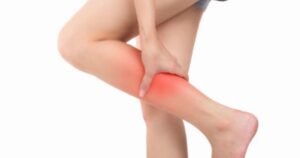Which vitamins or minerals do we need most?
We are all made up of minerals which are the smallest inorganic molecules. They are smaller than a vitamins in simple forms within our foods. Spiritual religions of all kinds state we are made of the earth and shall return to the dust which is made from minerals. We can survive longer with a vitamin deficit than a mineral one as they are at the base of our development.
How do minerals create or heal our bodies?
Minerals can enter individually or in two-atom pairs as in the case of sodium and chlorine are known as table salt. They can then be put into bigger building blocks to create or repair structures like our teeth and bones. The building blocks need to be assembled by enzymes in an orderly manner. We typically eat minute amounts daily in comparison to vitamins even though we need 20-30 different minerals.
When your body pulls minerals from bones, it is not energy that is created. They float throughout your body fluids being a part of the fluid. The energy nutrients (carbohydrates, fats, and proteins) are arranged into the building blocks with enzyme activity whereas minerals are not. Minerals on their own need to bond with others to form an energetic molecule.
An example would be that calcium will enter the body as an ion with 2 positive charges that can combine with several negative ions such as phosphate to form salts. Some forms are more absorbable or bio-available to get the calcium inside the body. The body will then pull the structure apart to just use the calcium after it is delivered.
What are minerals made of?
The minerals we need daily are inorganic elements such as carbon, oxygen, nitrogen, and hydrogen. Minerals never need to be a part of a living thing to remain making them a simple element. Minerals are simpler than vitamins which are compounds that do not contain carbon. Think dirt building blocks. Vitamins are different as they need to be used in a living organism like a mason uses mortar.
For example, calcium may come from the bone to act as a bandage in a microscopic cut in an artery to repair until true healing happens. The minerals play specific roles in creating essential compounds. Such is the case with the iron you eat being needed in your hemoglobin for your protein’s oxygen-carrying function.
Can minerals be destroyed?
These elements are indestructible. Even if iron is combined with other ions, cooked, exposed to air, touches acid, or mixed with other elements, it always remains iron. The form never changes and it always remains in its chemical element. Once they are in your body, they do not transform into anything else. The minerals are stuck until used or eliminated through detoxification.
Due to their everlasting nature, we don’t need to preserve them but we can’t burn through our storage within our cells without dire consequences.
What can change a mineral?
Only water, because it too is ionic will influence the mineral to change the body in acidic balance or not. Minerals ions ARE water-soluble just like some vitamins. They are not changed in form but with water, minerals are transported and easily absorbed into the bloodstream. The unused minerals will be excreted by your kidneys if you have open pathways. The mineral, absorption rate, and protein transportation vary for each person’s mineral balance.
Just like vitamins, some minerals need a carrier to enable them to pull them into the bloodstream. Some are stored in our tissues and cells for later use. Copper, iron, magnesium, manganese, iodine, fluorine, and chlorine can become toxic if in excess so detoxification needs to be a daily practice.
How much of each mineral do I need?
I’m asked this often and as muddy as it sounds, everyone is unique in their needs. We typically only need a few micrograms of cobalt but a gram or much more of phosphorus, sodium, or calcium. This is where we separate them from major minerals to micronutrient minerals.
Would increasing minerals improve my energy?
Just as in the case of water which we need to stay alive, minerals yield no energy. Our 3 macronutrients of protein, carbohydrates, and fats are the compounds we get our energy supply from for daily activity. They may have a single molecule made up of up to 7,000 atoms. They are digested in these larger units only to shrink during oxidation releasing tiny molecules of water and carbon dioxide for energy. In a liquid form, they would equal 2-3 cups of volume.
Minerals are the smallest element parts of your macronutrients along with water and then vitamins. As we rebuild the micronutrients with vitamins we can adjust your metabolism, thyroid function, adrenals, inflammation, and cellular sugar levels. It is the beginning of illness that we need to reverse engineer back to for true correction!
How do minerals change your pH level?
The amount of major minerals found in the body influences the acid-base or base-forming balance. The major minerals affect the balance more so than the trace minerals iron, manganese, zinc, copper, and iodide. Your major calcium, phosphorus, potassium, sulfur, sodium, chloride, and magnesium.
How minerals are formed or where we can get natural mineralization?
Essentially clean spring water, fruits, and vegetables. Plants take up the minerals from the soil. Organic plants pull fertilizers made up of decomposed organic material instead of chemical versions. If the soil is rich in organic matter the plant will pull them to create a healthier plant for you to eat. Depleted soil is becoming more of an issue by the week.
Our total trace minerals would fit into a teaspoon but they are so powerful we would die without them. A deficiency or excessive toxicity could be deadly. It is amazing how our body can keep enough for optimal health and purge out the extra until it can’t…then we become toxic.
What happens if our mineral balances are low or out of balance?
Your body might survive for a time by using a less preferred mineral to try to keep metalloenzyme functions working. In time the body will decline cognitively, the diseases can form or grow and symptoms appear. Aluminum will “pinch hit” for zinc, gold displaces copper, lithium displaces sodium, etc. because some atoms look like others with the same number of electrons in their outer shell.
In your mineral balancing program, we are trying to replace lesser minerals with preferred ones. This will improve their levels of availability and fill enzyme binding sites. Once the preferred ones are in place we can fine-tune the lesser ones.
The replenishment of low levels will help your body to start to detoxify once again with energy to remove the oxidized metals or biounavailable minerals that are stuck. By having extra mineralization in the form of supplementation, you will have fresh and available forms for repair or functions. This includes removing free radicals that diseases such as cancer thrive upon.
Why are minerals important?
They are in charge of:
- delivering nutrients & oxygen
- creating energy within the body with other elements
- helping hormone balance
- working with enzymes to carry out body functions
- aiding white cells in healing
- building the immune system
- balancing other minerals and heavy metals
- regulating all systems (nervous, digestive, etc.)
- controlling our emotions and behaviors to a large degree
- detoxification of oxidized heavy metals
- removing unavailable forms of minerals stuck in the body
Hair Analysis can measure mineral levels and ratios
A Hair Mineral Analysis can show you where you are and where you want your body to be. We can see exactly which minerals need rebuilding with a specified diet and supplementation. When targeting your deficiencies while detoxifying heavy metals that are stuck, you can reach the best level of health possible.
As you can see, mineral levels and balance between them are essential to our health as well as our longevity. By using a Hair Mineral Analysis, I can see exactly what your body needs to help you.
LET’S CHAT about your health goals!
Learn why you need vitamins to complement your mineral supplementation.
Copyright Scientific Nutrition, LLC 2022




